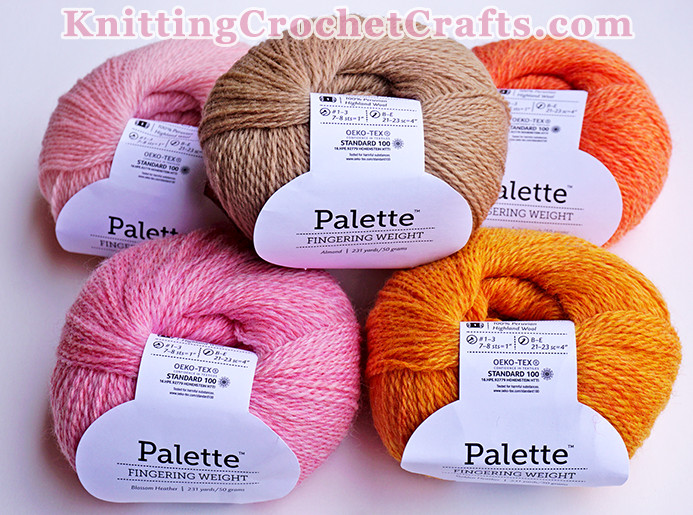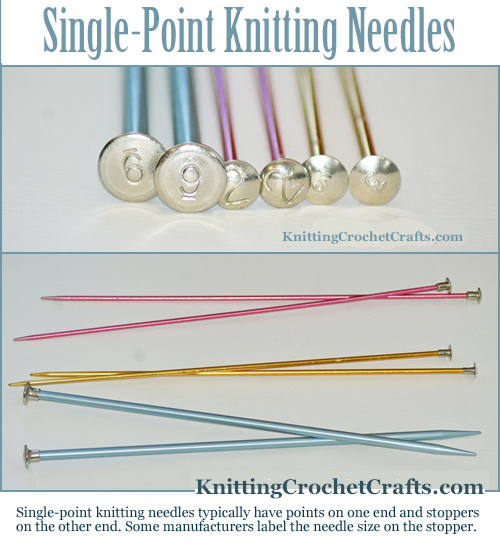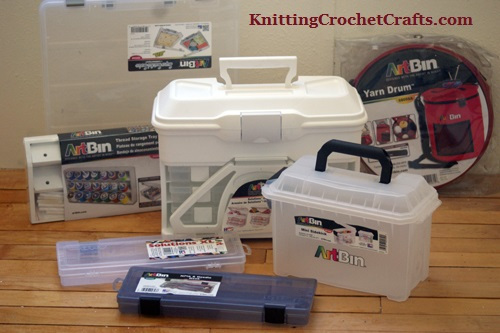To succeed at knitting, you’ll need the following knitting supplies:
Yarn or Alternatives

Yarn tends to be the easiest and most popular material to knit with; however, there are yarn alternatives you can consider using. Try rag balls, “plarn”, or wire, for starters.
If you’re a beginner to knitting, I recommend using a smooth, medium-weight wool yarn to start with; try an economical wool such as Cascade 220 by Cascade Yarns or Wool of the Andes by Knitpicks for working your first swatches or knitting projects.
Knitting Needles
Knitting needles aren’t strictly necessary for success with knitting; it’s possible to knit with your fingers. That technique is called “finger knitting”. It’s also possible to knit with a loom or knitting machine.
However, most knitters are using knitting needles to create their projects.
Check out our beginner’s guide to knitting needles for detailed information about the types of knitting needles that are available — plus advice on which type of knitting needles are best for beginners to knitting.
Ruler and Flexible Tape Measure
You can use any ordinary ruler and flexible tape measure for knitting. It’s helpful to have both a rigid ruler AND a flexible tape measure; the rigid ruler is helpful for measuring the stitches in your gauge swatches and projects, and the flexible tape measure is useful for taking your own measurements to see how big you need to make a particular project. You’ll measure your head circumference to find your hat size, your hand circumference to figure out which glove size to make, etc.
Knitting Gauges
The phrase “knitting gauge” can describe a couple of different tools — or, sometimes, multiple functions can be combined into one tool that is called a gauge. Some knitting gauges are intended to help you check how many stitches and rows are in an inch; and some knitting gauges are intended to help you check the size of a knitting needle that isn’t labeled. I recommend having both types of knitting gauges on hand, although this is optional if you already have a ruler and tape measure.
Hand Sewing Needles
You’ll typically need a tapestry needle, darning needle or similar hand-sewing needle for weaving your yarn ends into your work after you’ve completed a knitting project. It’s also possible to do this task with a crochet hook instead of a needle.
Crochet Hooks
Crochet hooks aren’t strictly essential knitting supplies, but you’ll find them to be endlessly useful to have on hand as part of your knitting supply stash. A crochet hook can be used for some methods of casting on; they can be used to fix dropped stitches in knitting; and they can be used for adding crocheted details to your knitting projects. There are many patterns available were knitting and crochet techniques are combined.
Stitch Markers
You’ll need some method for marking stitches in your knitting. The easiest way to do this is to use commercially available stitch markers; however, you can also use safety pins or colored bits of yarn for this purpose.
Craft Organizers
It’s helpful to be able to organize your yarn, knitting needles and other knitting supplies. There are many different craft organizers you could use for this purpose; see how to organize yarn for ideas — and see this review of the Artbin Yarn Drum if you’d like to check out my favorite knitting and crochet project bag.
Beyond these, there are other materials and supplies that could be nice to have for knitting — but in my opinion, the supplies mentioned above are the most useful supplies you’ll want to have on hand. I hope this information is useful to you as you begin your knitting adventure.
More Craft Pages You Might Enjoy:
- Knitting
- Knitting Techniques
- 2026’s Best New Knitting Books
- Knitting Yarn
- Crochet
- Crochet Patterns
- Crochet Tutorials
- Crochet Stitches
- Crochet Motifs
- Crochet Hooks
- Crochet Books
- Best Crochet Books for Beginners
- Sewing
- Sewing Appliques
- Quilting
- Beadwork
- Paper Crafts
- Fine Art
Find More Craft Project Ideas HERE!
Posted By: Amy Solovay
This page was last updated on 3-11-2024.

